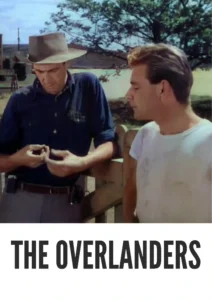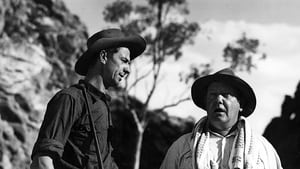Video Sources 0 Views

Synopsis

Embark on an unforgettable adventure with The Overlanders, a classic Australian Western from 1946, now brilliantly colorized to immerse you in the breathtaking landscapes and gripping drama of the Australian outback. Starring Chips Rafferty, this cinematic treasure, directed by Harry Watt, tells a compelling story of resilience, determination, and the pioneering spirit of the Australian people. Perfect for lovers of classic cinema, Westerns, and historical dramas, this HD download brings a pivotal piece of Australian film history to life with vivid detail and renewed vibrancy.
Set during World War II, The Overlanders depicts a critical moment in Australian history when the threat of Japanese invasion loomed large. To prevent valuable cattle from falling into enemy hands, Dan McAlpine (Chips Rafferty), a resourceful and experienced drover, is tasked with leading a massive herd of 1,000 cattle on a perilous 1,600-mile journey across the harsh Australian outback.With a diverse group of companions, including resourceful stockman, tough Aboriginal trackers, and determined drovers, Dan faces unimaginable hardships, from drought and bushfires to treacherous terrain and stampedes. Along the way, they encounter challenges that test their courage, loyalty, and endurance. The journey transforms them, forging unbreakable bonds as they work together to protect the herd and ensure the survival of their nation’s vital resources. The Overlanders captures the spirit of a nation united in the face of adversity.
The film boasts a talented cast of actors who bring this epic story to life:
- Chips Rafferty as Dan McAlpine
- Daphne Campbell as Mary Parsons
- John Nugent Hayward as Bill Parsons
- Jean Blue as Helen
- Helen Grieve as Mrs. Parsons
- Frank Ransome as Corky
The Overlanders masterfully blends elements of the Western and adventure genres, creating a unique and compelling cinematic experience. It’s a thrilling tale of survival against the backdrop of the Australian outback. The film weaves together themes of courage, camaraderie, and the determination to overcome seemingly insurmountable obstacles.
Released in 1946, The Overlanders reflects the anxieties and resilience of Australia during World War II. It portrays a nation on high alert, grappling with the potential threat of invasion and the need to protect its vital resources. The film served as a powerful symbol of Australian identity and determination during a time of national crisis, celebrating the spirit of the outback and the strength of the Australian people. It was also one of the first Australian films to gain international recognition, showcasing the country’s unique landscapes and stories to a global audience.
This colorized version of The Overlanders has been meticulously restored, utilizing advanced digital techniques to enhance the visual experience while respecting the film’s original integrity. The colorization process involved extensive research into the landscapes, clothing, and environments of the Australian outback in the 1940s to ensure authenticity. While the specific software used remains confidential, the techniques included advanced algorithms for color palette selection, tone mapping, and image enhancement. This painstaking process brings new life to the characters and settings, making the story even more immersive for modern audiences.
- : Harry Watt
- : Michael Balcon
- : Harry Watt
- : Osmond Borradaile
- : Inman Hunter
- : Ealing Studios
- : General Film Distributors (UK)
- : 91 minutes
- : MP4
- : HD (1080p)
- : Compatible with most devices, including smartphones, tablets, computers, and smart TVs.
The Overlanders is considered a landmark film in Australian cinema history, celebrated for its authentic portrayal of the outback, its compelling narrative, and its strong performances. It was praised for its depiction of Australian identity and its contribution to the development of the national film industry.
- : What is The Overlanders about?
- A: The Overlanders is a Western adventure about a drover who leads a massive herd of cattle across the Australian outback during World War II to prevent them from falling into enemy hands.
- : Is The Overlanders (1946) a well-known Australian film?
- A: Yes, The Overlanders is a classic Australian film, considered one of the most important films in the country’s cinematic history.
- : Is this version of The Overlanders colorized?
- A: Yes, this version has been professionally colorized to enhance the viewing experience.
- : What makes The Overlanders important?
- A: The Overlanders offers a valuable insight into Australian history and culture, showcasing the resilience and determination of the Australian people during wartime.
- : What is the download format?
- A: The download format is MP4, which is compatible with most devices.
- : What resolution is the download?
- A: The resolution is HD (1080p), providing a high-quality viewing experience.
Experience the Adventure of The Overlanders Today!


